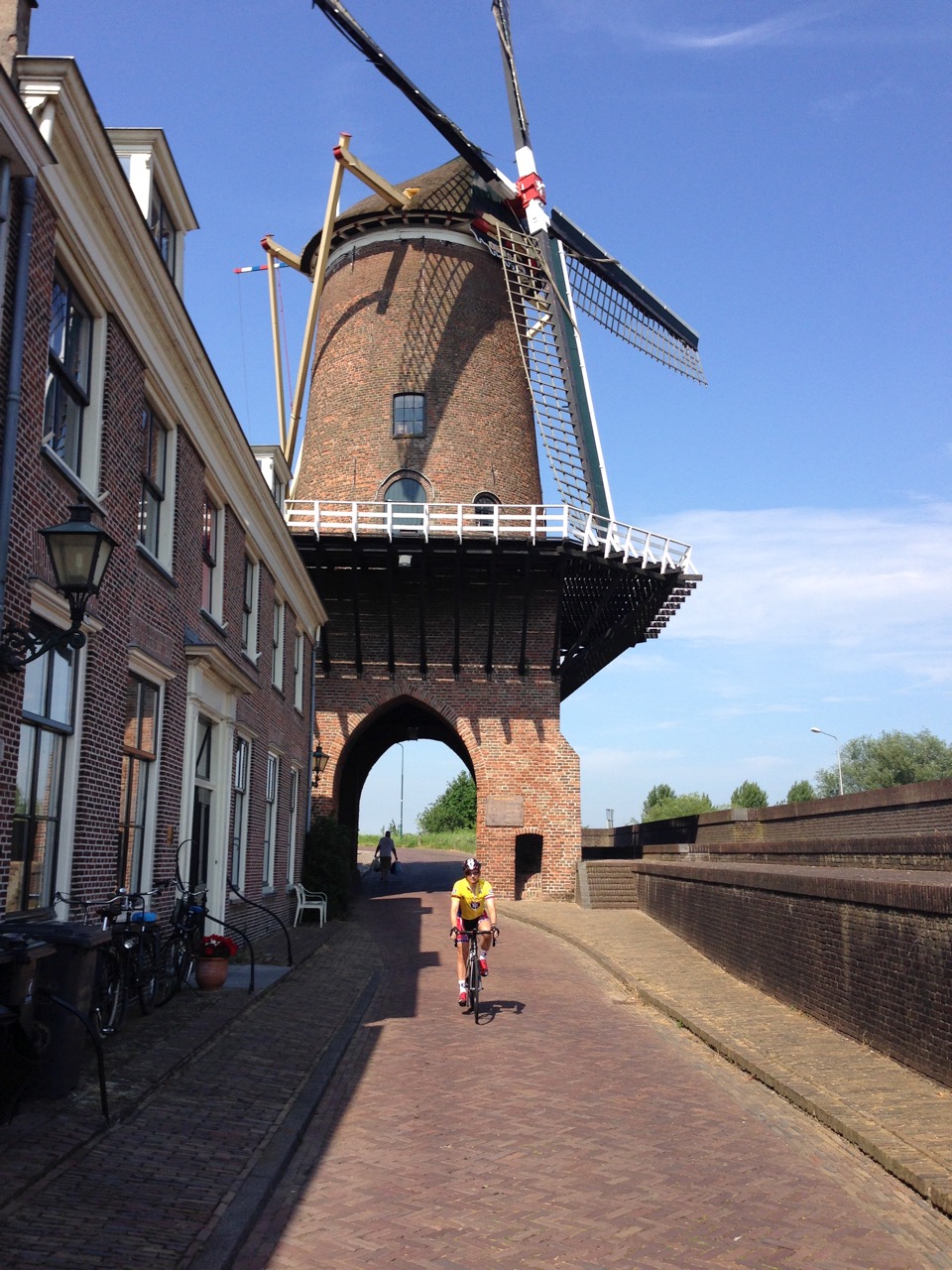In October 2013, WheelBrothers posted on their Facebook page they were looking for someone to discuss the differences in riding between Europe and Texas. I immediately shot them a note back from San Antonio that I would be willing to discuss European cycling as I had lived in Europe for numerous years and was soon to be living there again. Here we are three and a half years later and I am finally putting my fingers to the keyboard. But in that time I’ve added nearly 10,000 miles of European cycling experiences.
A bit about me first. As a fifty-something adult who is an avid cyclist, people often ask me why I ride so much and why I enjoy it as much as I do. My life is full of memories from cycling.
My most vivid childhood memory is the first time I bicycled by myself and the freedom I felt pedaling. It felt like I was flying. And the immediate subsequent first crash into a clothesline pole. I was hooked, and have been ever since. And even today, when I straddle my bike and head out for a ride I am still that same kid who crashed into the clothesline pole. I don’t think about anything other than cycling. I guess I’ve been into cycling before cycling was cool, to quote the phrase I’ve been seeing lately.
Another vivid memory is bicycling over to my Dutch girlfriend’s (now wife of 23 years) apartment one afternoon when we were dating back in 1992. She had been away on trip and I had already shipped my car back to the United States since I was leaving the Netherlands in a few weeks. She called me and said she had arrived home from her trip. So, being without a car I jumped on my bike and stopped to get flowers on the way to her apartment. I’m pretty certain Lance Armstrong, in his heyday, wouldn’t have matched my speed on that trip. I wish we would have had Strava back then, as I would have liked to see my data for that ride. And I was on a Dutch commuter bike, fifty plus pounds of rod actuated brakes, chrome, rubber and heavy steel.
Bicycling has also allowed me to experience nature much differently than when I am driving a car. I’ve been paced by a young horse along a fencerow in Texas who kicked up his heels at me when he out accelerated me in the impromptu contest of acceleration we found ourselves in. I’ve came across deer, rattle snakes (yuck), and have enjoyed seeing colorful cardinals flying across the road in front of me. And the half wolf, half dog, all devil beast that chased me in 1995 on the island of Terceira, the Azores (Portuguese islands in the Atlantic). I’d like to forget about that particular episode, but remain haunted by the beast till this day. I was lucky enough to cycle again on Terceira in December of last year, and have to admit I was on continual lookout for the beast. He will probably live forever and more than likely still has my scent as the one who got away. I wasn’t taking any chances.

I’ve also encountered a large hawk soaring on a collision course with my path at the same altitude during the spring of last year. This was during the descent of a long hill in Germany, while cruising along at 30 mph. He soared right alongside me and looked over to check me out, then flew right in my path and stayed about five feet directly in front of me for about ten seconds before breaking right and soaring away. It was neat experience to fly in formation with a hawk, albeit if it was for only a few seconds. My life is full of memories from cycling. And I still have one of my first bikes, a 1973 Schwinn Orange Krate.
My chosen vocation has provided me the opportunity to cycle in places many folks only dream about cycling. I’ve cycled in the Netherlands, Germany, Portugal, Greece, Austria, Switzerland, Italy, France and Belgium. Straight out of high school, I joined the U.S. Air Force where I served for nearly 26 years. I retired from the Air Force in 2009 and was given the opportunity to continue serving the Air Force in a civil servant capacity. I was very fortunate to have had four assignments to Europe as a military member. I am currently serving my fifth European assignment in Germany, as a civil servant this time. In all, one-third of my adult life has been spent in Europe. I will be heading back to Texas and settling down in New Braunfels this summer. I’m going to miss my local riding in Germany, as there is a Category 3 climb starting about 300 yards from my driveway and a Category 2 climb starting just a quarter mile away. And yes, even though I will be living in the “Hill Country,” the climbs aren’t quite the same.
What else will I miss about cycling in Europe? First off, there isn’t chip seal over here and for the most part the roads are very good. Also, the traffic is a lot more tolerant of cyclists than they are in the United States. On a few occasions when I have moved back to the states, it has really taken an adjustment period to get over my fear of cycling with the American traffic. And reading the recent news about the New Braunfels church bus mishap that killed 13 churchgoers possibly being caused by a texting driver only adds to my apprehension about riding again in Texas.
Enough about me. How is the riding in Europe? To sum it in one word: Outstanding!
The variety of areas to cycle in, the tolerant traffic, the cultural aspects, the food, the drinks and likeminded cyclists all add up to many terrific experiences. Though I miss the Texas winters for cycling when the snow and ice force me to use TrainerRoad on the smart trainer (while my Texas friends are posting pictures to social media of themselves in shorts and short sleeved jerseys), the European summer weather is perhaps a bit more tolerable than Texas summer cycling, where I’ve planned routes based on available water stops.
Where are some great places to cycle in Europe?
The Mosel River Valley in Germany. Paved roads with minimal traffic switch backing up through vineyards, overlooking the Mosel River and quaint little German towns. And if you don’t like climbing, you can simply meander along the bike paths which run alongside the river. I have to admit it took me twenty-seven years to finally do this ride. As a young American military man stationed in the Netherlands in 1990, I was visiting another American military friend who was stationed in Germany. We were friends from a previous assignment in Abilene, Texas (Tour de Gap country). During our visit, we took a drive along the Mosel River and stopped at a restaurant. When I saw the paved roads climbing the hills through the vineyards (Weinberg in German), I mentioned I would like to ride them someday. And although I managed to be stationed in Europe several more times in my military career, I never made the time/effort to accomplish riding in the vineyards before returning to the states. As I am leaving Europe soon I figured I better finally accomplish the ride I thought about back in 1990. So my wife and I recently drove up to Piesport (a small town on the Mosel River) and I set off on a short ride that had me climb up though the vineyards, down a wonderful descent, back up through the vineyards and across the Mosel and back. The ride was as nice as I believed it would be when I first thought about it nearly three decades ago. Better late than never!
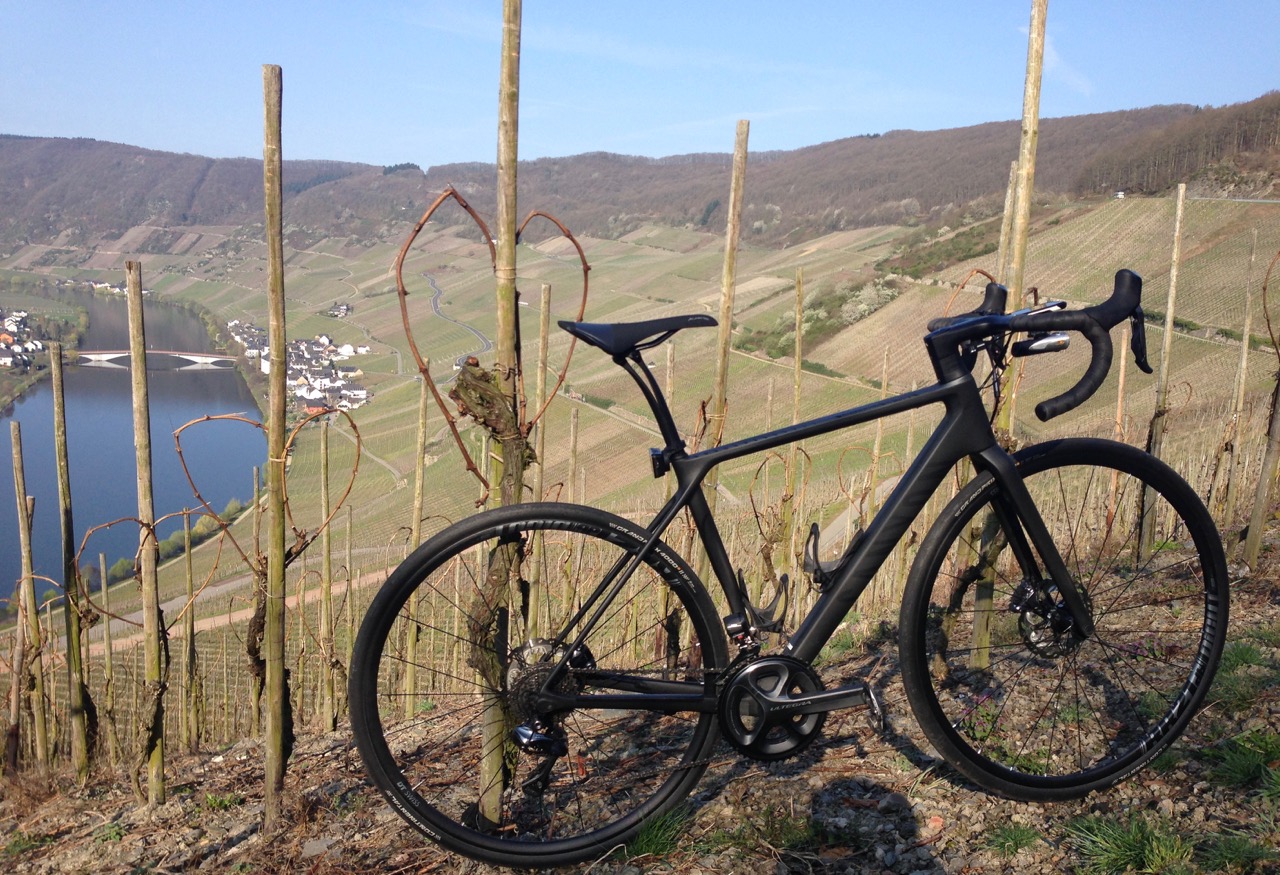
Seeing crazy things. You never know what you might see cycling in Europe, or what the weather will be at the top of the mountain passes.
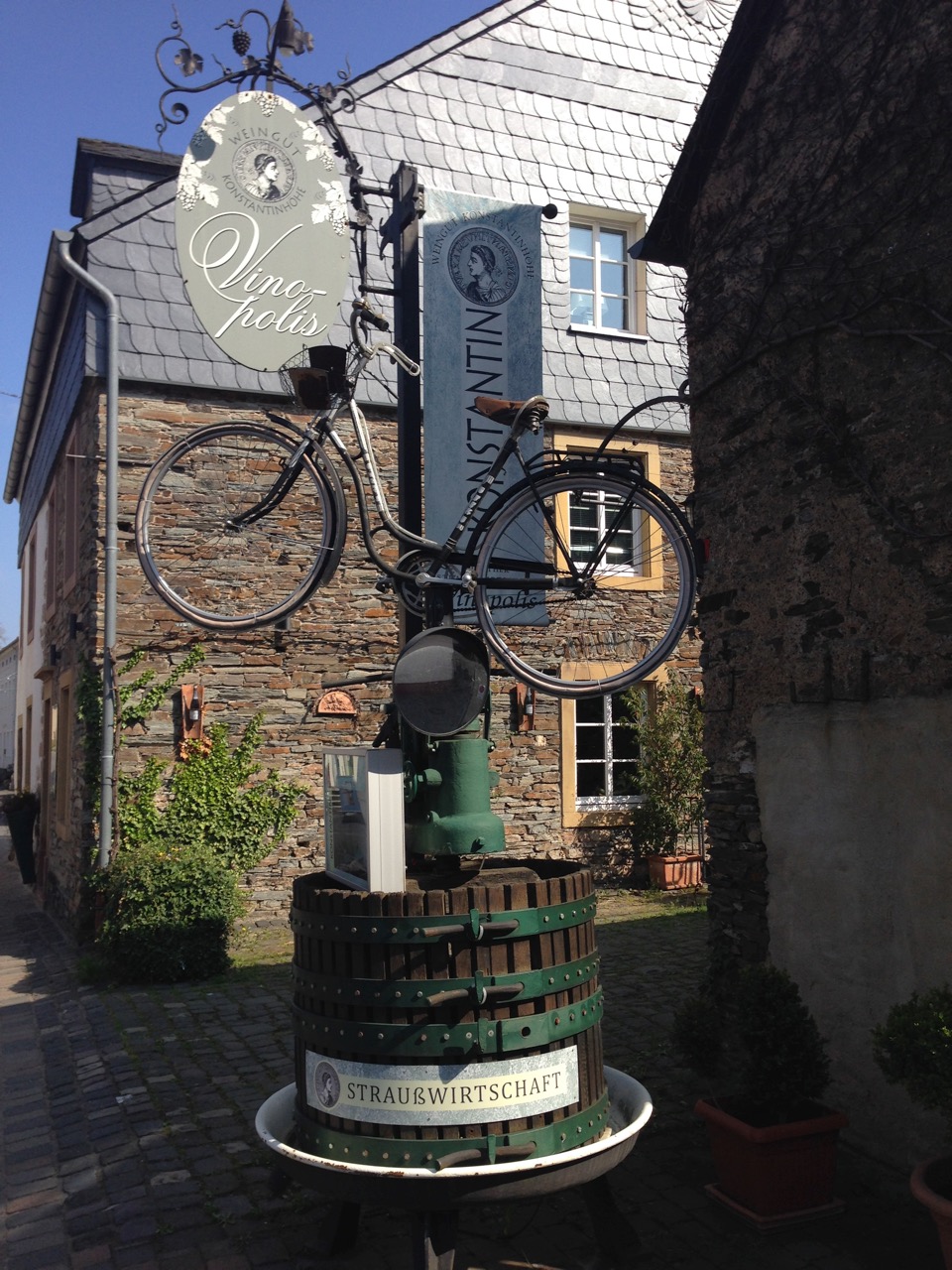
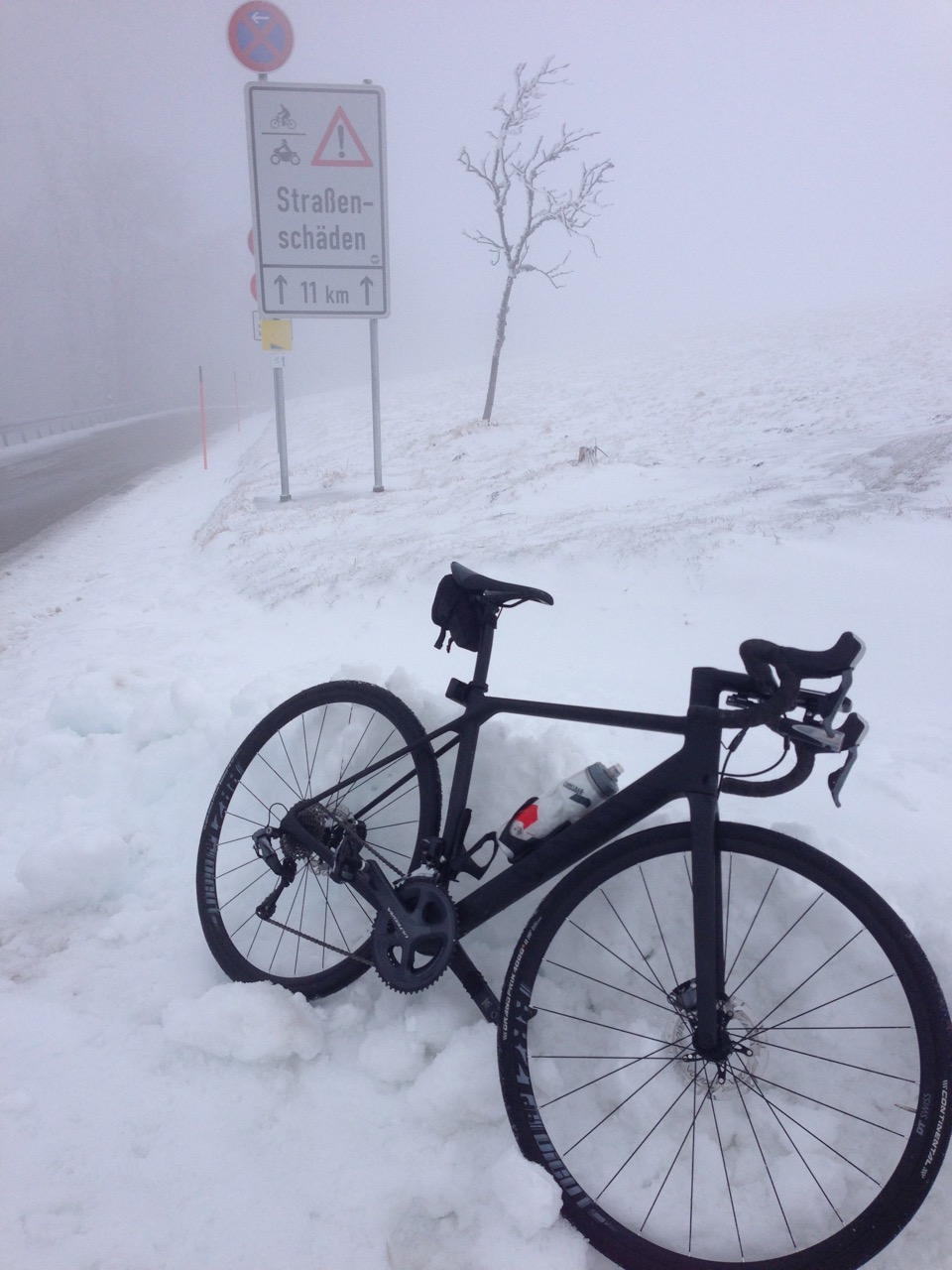

Being able to ride the climbs we watch in the Tour de France and the Giro Italia. I am the first to admit I am not the fastest guy on a bike, though I am not really a slouch either. But when I compare my times up some of these climbs to the professionals, I do feel more than a bit slow. Just being able to see some of these climbs in person is breathtaking, and no matter how high of resolution/big of flat screen television you may have it just doesn’t convey the beauty of these climbs.
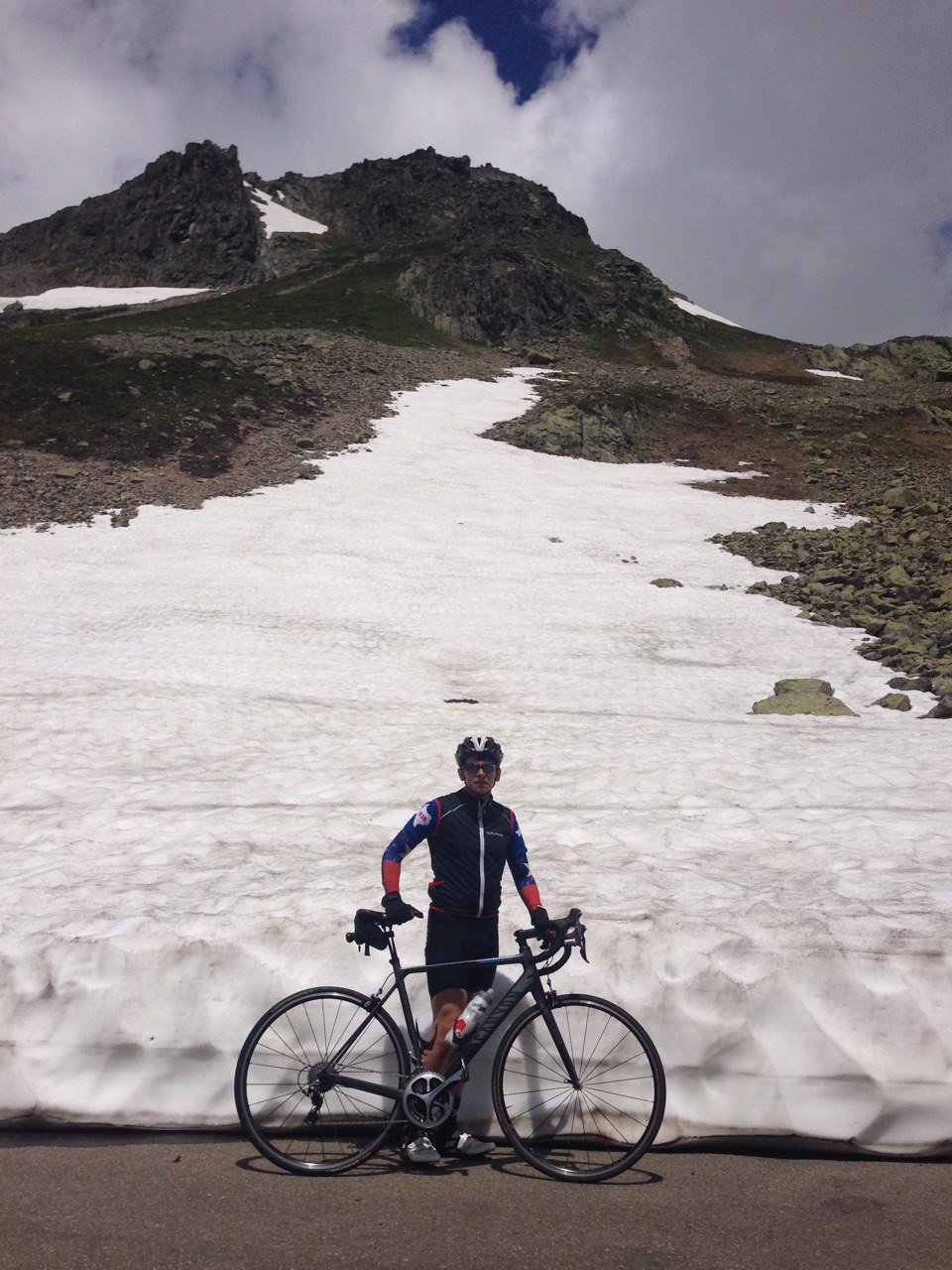
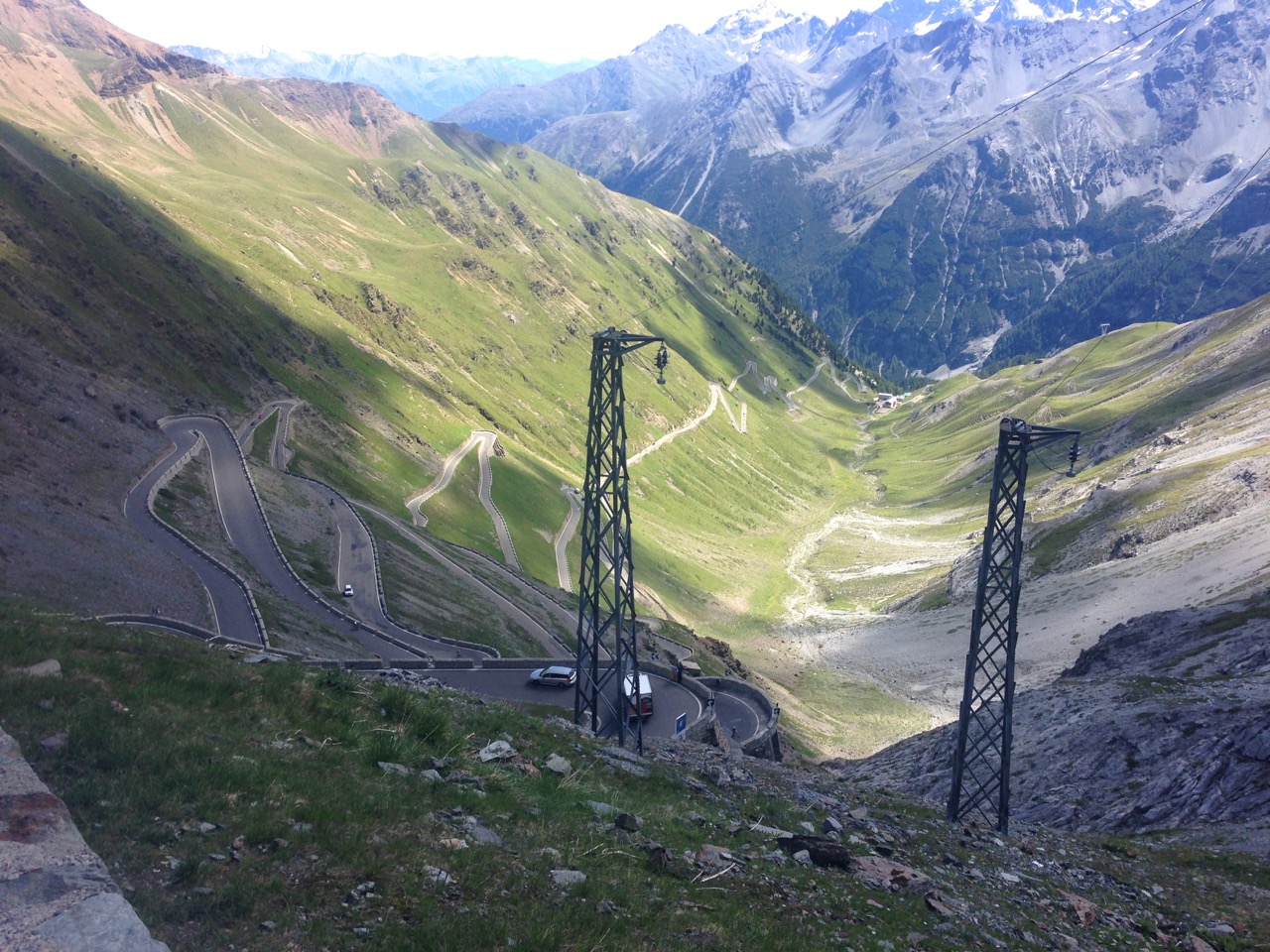
Last summer, Rudy, one of my Texas cycling buddies and good friend came over to ride the Stelvio Pass and the Dolomites with me. On our car drive to the motel, we ended up on a road about two-thirds of the way up the Stelvio Pass and had to descend into Bormio, the town we were staying at. It literally looked like the road was dropping off the face of the earth into the valley below. Rudy, suffering from jet lag, was looking at the road in disbelief and incoherently mumbling something about not being able to climb up this monster climb. You want to talk about being apprehensive of climbing it the next day. And although the climb was long and tough, the views were breathtaking and the climb wasn’t overly difficult.
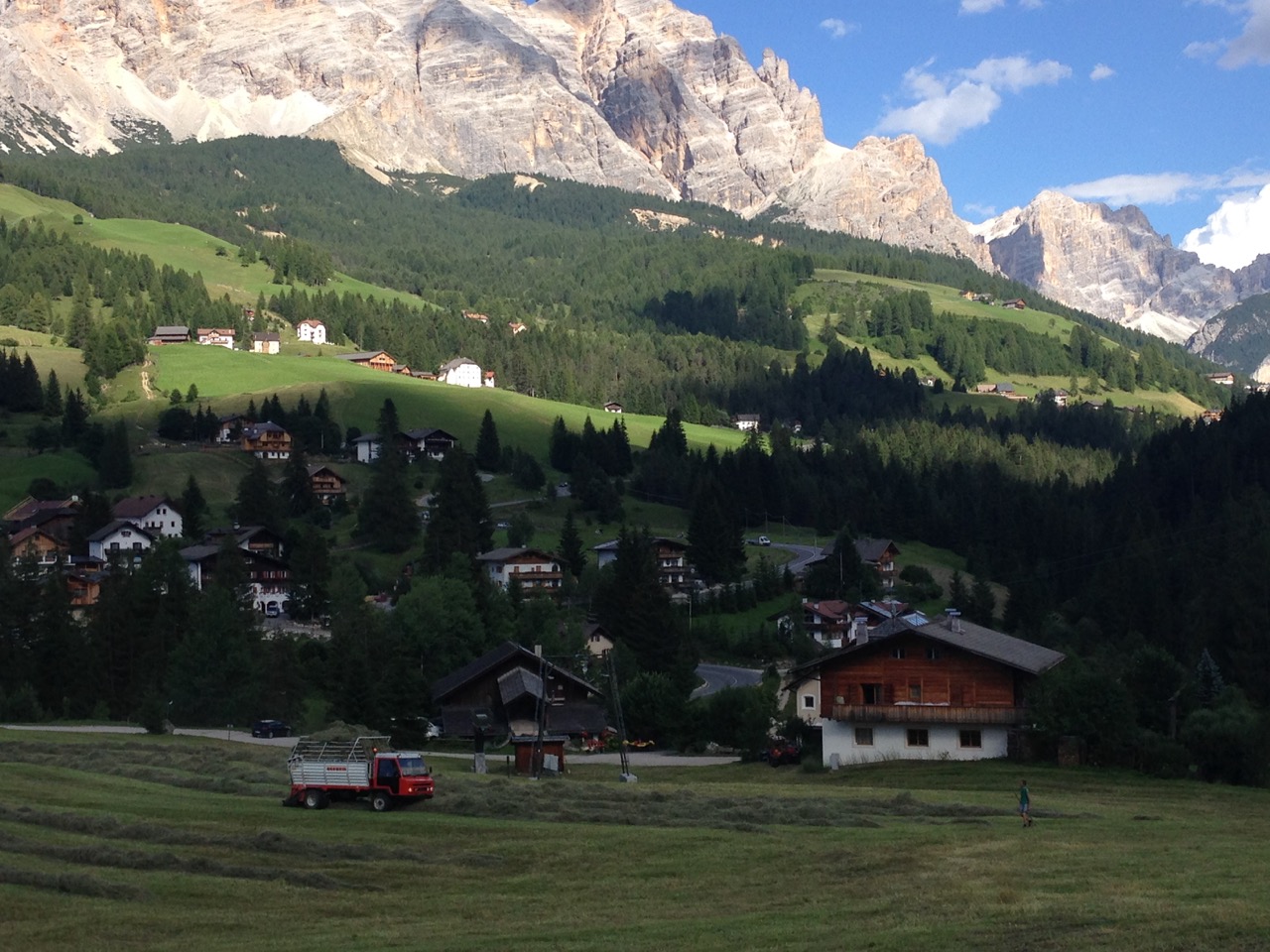
I can only describe cycling in the Dolomites (Italian mountain range) with the following phrase “a cyclist’s playground.” There is no other way to sum it up. But I need to caveat that – it is a cyclist’s playground for those who like to climb and descend, as I do not recall riding on any flat sections when we were there. There was one long four percent section we climbed that felt somewhat flat after the climb that had preceded it. This area is a must do if you are coming to Europe to cycle and like climbing. The only thing Rudy and I did wrong is we didn’t allow enough time in the Stelvio Pass area nor in the Dolomites. We will correct that in the future and stay a couple of days in each area.
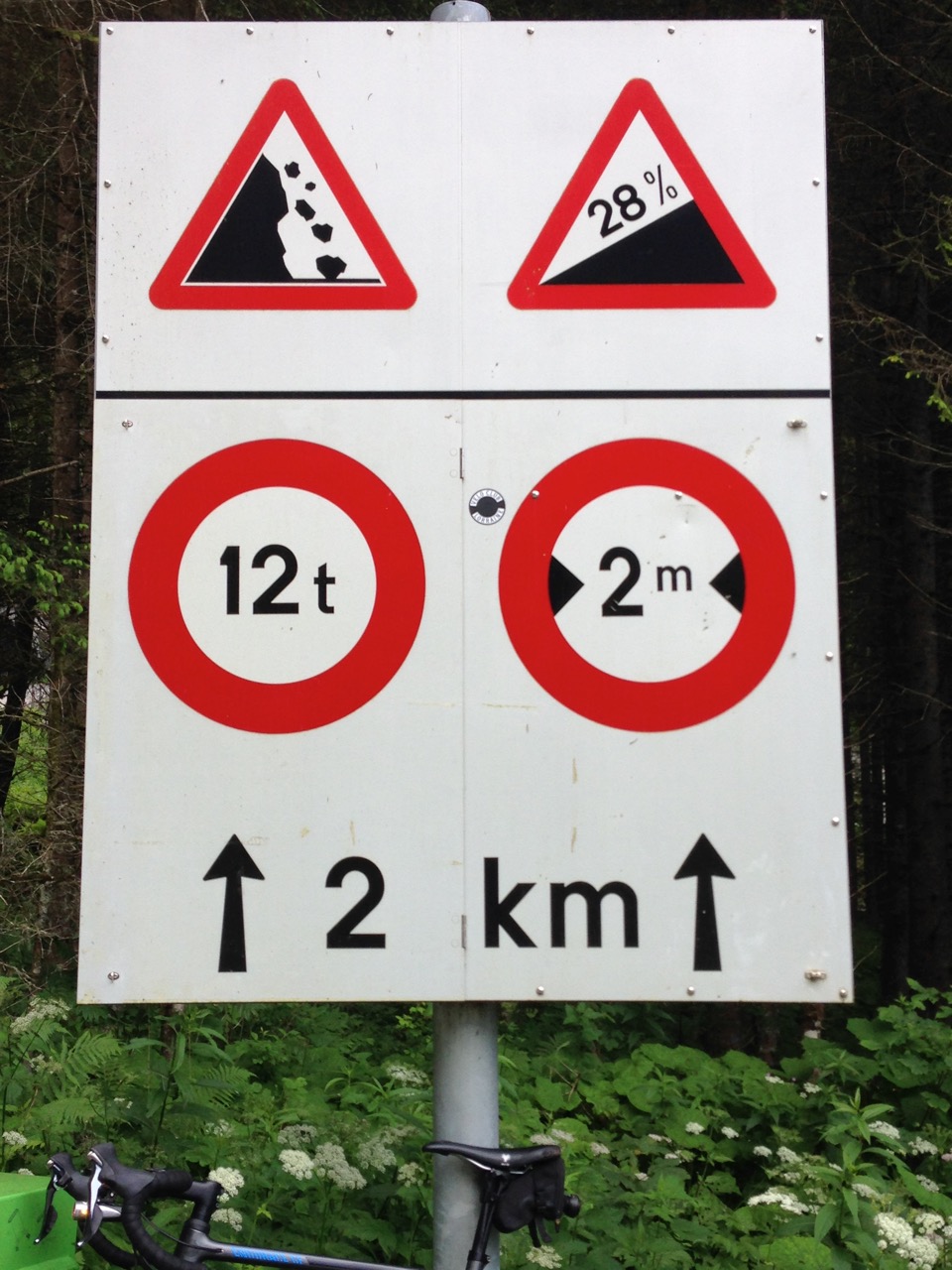
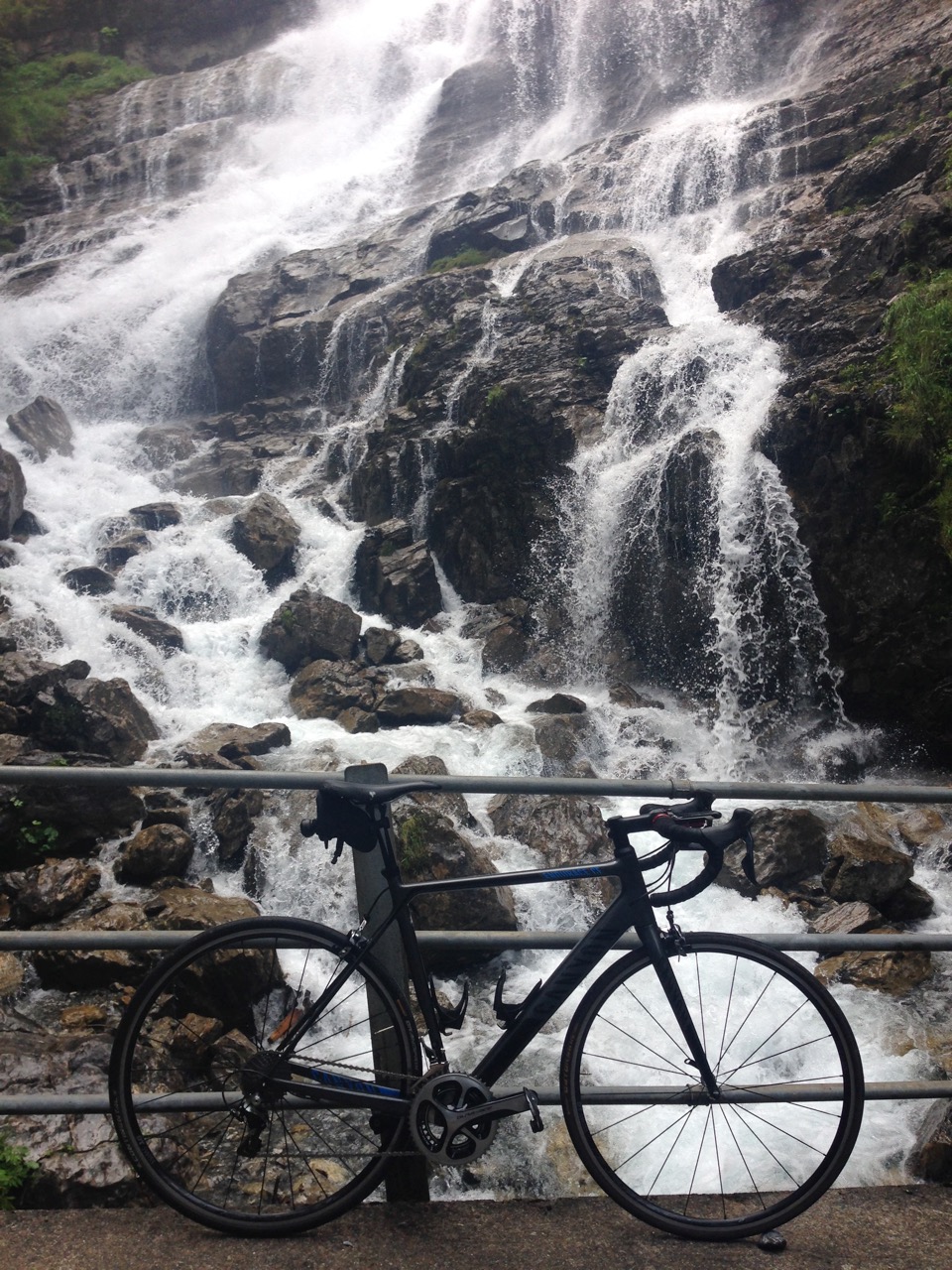
You also never know what you will discover just out exploring. Like the 2km long climb at twenty-eight percent leading to Griesalp, Switzerland. This climb had me questioning my commitment to cycling and life in general. I made it, though there might have been a stop or two to enjoy the scenery.
And although the mountainous areas are outstanding, there are other areas that are just as fantastic.
The world famous automobile racetrack, the Nurburgring, in Germany. One weekend a year in July they open it up exclusively for cyclists. 1500 feet of climbing every fifteen mile lap. 60 mph descents and some seventeen percent grades and long climbs. To sum it up: tough. But no cars either! I rode the Circuit of Americas track in Austin when they opened it up for cyclists a few years ago. That was fun, but the Nurburgring is much more challenging with highly varied terrain.
Cycling in Europe has also allowed me to meet many European cyclists and become involved in different events. Usually a day before or after the “spring classics,” the race course is set up for cyclists to ride, like an organized century ride in the states. Both last year and this year I am riding the Amstel Gold Race route with the “Wounded Warriors of the Netherlands,” a group of wounded Dutch combat Veterans. One of the Dutch combat veterans had lost a leg, and he cycles with his remaining leg. He remains a strong cyclist. The area of the Amstel Gold is in has many short, steep climbs. When I rode with the group last year, there were often cyclists walking the steep sections, and Edwin, the one legged veteran, was cranking up all of them, to include the Cauberg climb.
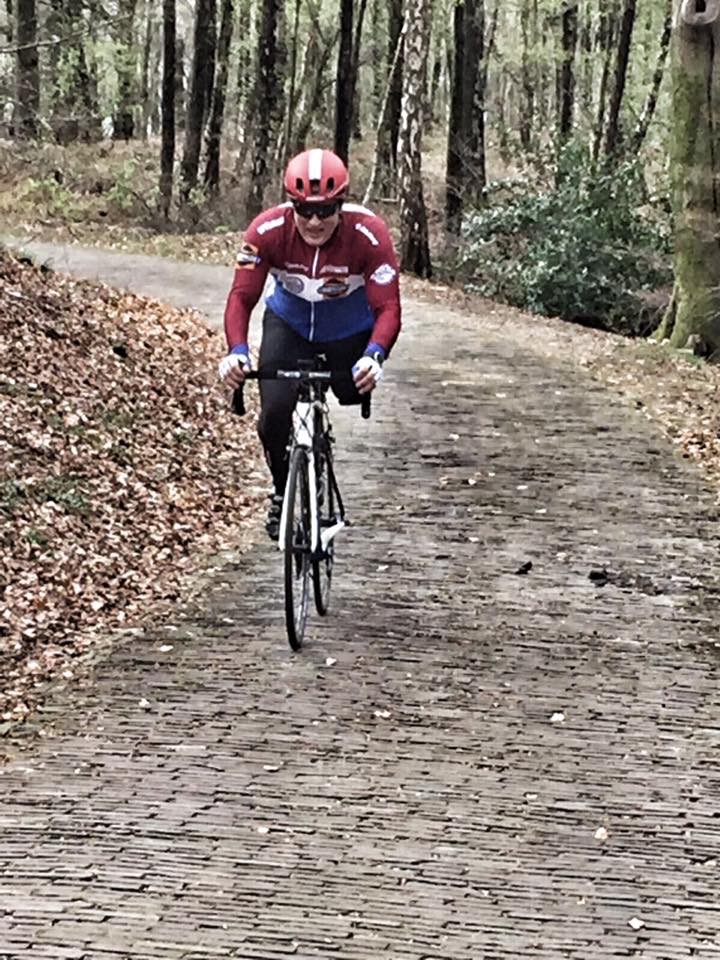
Inspiring to say the least.

There are also little known areas that offer some outstanding cycling and scenery, with minimal traffic. The Italian island of Sardinia and the Algarve region in the south of Portugal (where the Volta ao Algarve takes place) are terrify examples. It was not unusual to cycle for miles at a time in these areas and not see any traffic. Or by chance, if you can manage to pass the long row of cars backed up due to a very slow moving dump truck at the beginning of a ten mile descent through a series of switchbacks on the island of Sardinia, you will have the remaining descent and switchbacks entirely to yourself. That was fun!
I must admit the area the Amstel Gold Race is in (Limburg province of the Netherlands) is probably my favorite area I have cycled in. It offers a wide variety of cycling challenges, from short steep climbs of twenty-two percent to longer climbs if you cycle into neighboring Belgium. And the carbohydrate replenishment after the ride is truly outstanding, in the form of “appel gebak” (Dutch style apple pie) and “pannenkoeken,” Dutch style pancakes that can be made with a wide-variety of ingredients mixed in. And I would be remiss if I didn’t mention the Amstel Radler grapefruit “bier,” which totally refreshes the soul after a ride on a hot day.
If you have never cycled in Europe and have the opportunity to, I would highly recommend it. There are many great areas, the traffic is more tolerant, and the experiences will last a lifetime. And though I am leaving Europe this summer, this will be far from my last time cycling in Europe. There are still many mountain passes to conquer.
Later this year if you see someone in the San Antonio area (or at Cyclefest or Tour Das Hugel) in a Dutch or German kit riding a blacked out Canyon, pull alongside and say hello. I can talk European cycling for hours at end. And I should be able to tell you about climbing the Alpe d’Huez and Lacets de Montvernier by then, as they are on my list of climbs to do before returning to Texas.

Be careful out there, and keep building those cycling memories!
